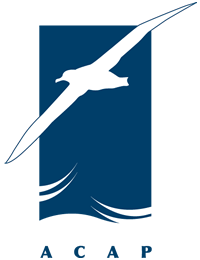Johanna Pierre (DragonFly Science, Wellington, New Zealand) and colleagues have submitted a report to the New Zealand Department of Conservation that considers how best to reduce seabird bycatch in demersal longline fisheries in New Zealand waters.
The report’s abstract follows:
“Seabirds of conservation concern, including the black petrel (Procellaria parkinsoni), are incidentally captured on bottom longline fishing gear deployed in inshore commercial fisheries in northern New Zealand. These fisheries target a variety of fish species, including snapper (Pagrus auratus), bluenose (Hyperoglyphe antarctica), hapuku and bass (Polyprion oxygeneios, P. americanus), and ling (Genypterus blacodes). Using government fisheries observer coverage, we investigated the efficacy of operational practices in use in these fisheries for reducing seabird bycatch risk. In addition, we explored potential new measures for reducing seabird captures. Four main components of operational practices are expected to influence seabird bycatch risk in northern bottom longline fisheries. These are the time of day at which longlines are set, the use of weighted longlines, the deployment of streamer lines, and the retention of fish waste. To reduce the risk of seabird captures in inshore bottom longline fisheries in northern New Zealand, we recommend that the efficacy of line-weighting strategies in use is increased. This may involve adding more weight to lines and sinking hooks closer to the boat (e.g., using closer weight spacing, more even-sized weights, longer float-ropes, denser weights and slower setting speeds). In addition, we recommend that longlines are set prior to nautical dawn, fish waste is held on-board during hauling, the design and construction of streamer lines is improved, the improved streamer lines are deployed on all sets, and sinking longlines to 10 m at the end of streamer lines is considered as a minimum performance standard. In combination, these measures are expected to significantly reduce the risk of seabird captures in inshore bottom longline fisheries.”

Black Petrel, photographed by Dave Boyle
Reference:
J. P. Pierre, J.P., Goad, D., Thompson, F.N. & Abraham, E.R. 2013. Reducing seabird bycatch in inshore bottom longline fisheries. Draft Final Report Conservation Services Programme Projects MIT2011-03 and MIT2012-01. 84 pp.
John Cooper, ACAP Information Officer, 16 August 2013

 English
English  Français
Français  Español
Español